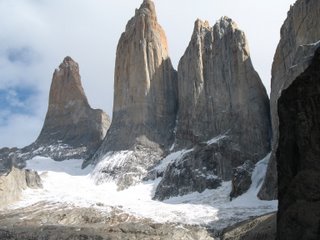Sucre and Potosi - Two Colonial Gems !Finally, some Spanish colonial cities to really rival those found in Mexico.

Sucre is generally regarded as Bolivia´s finest city, sitting at moderate altitude of 2760m, it has a more pleasant climate than La Paz or Potosi. It was the countries first capital at its creation in 1826, a year after the region of Alto Peru split from Spanish-liberated Peru to become Bolivia. The Great Liberator of most of the northern half of the continent, Simon Bolivar, became the country´s first president and was succeeded in turn by his leading General, Jose de Sucre, giving the city its name. It was only with major political and economical changes in the 1950s that the capital was relocated to La Paz. Indeed Sucre still retains much of the judicial control and a large, wealthy middle class population and five universities.
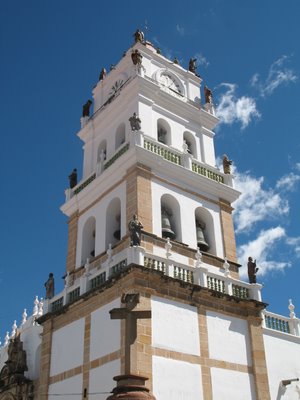
The white city of the Americas, is the best preserved Latin American city I have seen so far on this trip. The beautiful central plaza is surrounded by colonial era churches and grand balconied houses. Spent a very pleasant warm day strolling the streets, soaking it all up, meeting a group of three Kiwi lads in town over a leisurely breakfast and then again back at the hostel later. So we decided to go out for some pizza and beer and the excellent meal turned out to surpass most other Latin American pizzas, while a jazzy Andean Pan Pipe band entertained us with some energetic yet mournful music. Even the colonial-style hostel was a gem, large airy rooms, comfy beds and the same clean, crisp, whitewashed feel. Indeed after an excellent nights sleep, it was almost a shame to leave. I could have easily stayed another day. However, I decided to move onto Potosi and have the extra night at the higher altitude there. I figured it would be better to get fully adjusted to the real heights of the altiplano, with a 3 day tour of the high plains of the South West on the agenda.
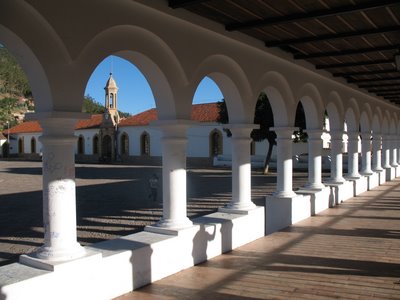
At 4090m, Potosi is the worlds highest city. It was also once rumoured to be the worlds richest. The Spanish search for silver struck the jackpot at Cerro Rico, which still dominates the town. Huge amounts were mined here, between the 16th and 18th centuries, enough to keep up the Spanish domination of colonial affairs for around two centuries. The impressive mint, is the towns colonial centrepiece and is now an excellent museum which has been fantastically restored to what must have been its former glory. Unsurprisingly, it was also the largest of eight mints the Spanish set up across Latin America. Only the rich silver veins of Mexico would begin to rival those found here. To this day, the mining continues, albeit on a much smaller scale, amid shocking working conditions which I decided not to witness due to worries about how it would affect my asthma. These days lead and zinc are the main metals found along with lesser amounts of silver and tin. Although less beautiful than Sucre, the town retains more of an authentic working feel to it. A diverse selection of churches from various periods allow you access to the roof of the city, from where there are excellent views. My two days here passed very quickly, there was plenty to explore just within the town itself and staying at the very friendly Koala Den was a real pleasure. I got the bus out to Uyuni heading out over the ever increasingly stark altiplano to the extreme limits of Bolivia´s most dramatic terrain. The next few days would prove to be very special indeed.
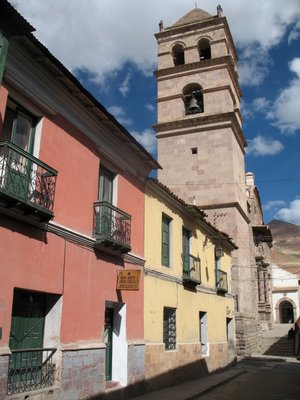
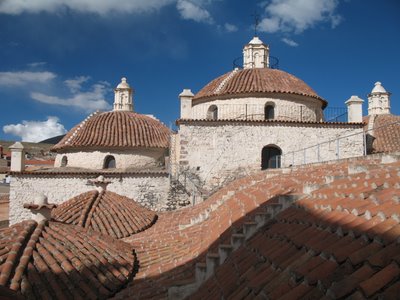
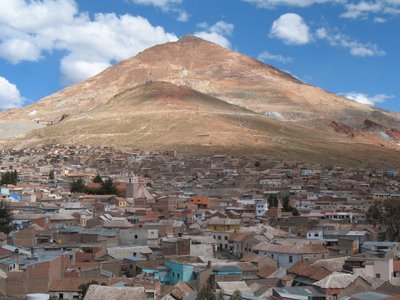
First Impressions of Bolivia - Amboro National ParkSanta Cruz turned out to be just another city, although there were a few interesting things, like the pet toucans at the hostel and my visit to the zoo. Although its clearly seen better days, it was still a good introduction to some of South America´s amazing wildlife, most of which will probably elude me over the next month or so. Highlights were the jaguars, pumas and other cats, the monkeys, the amazing variety of birdlife - macaws, parrots, condors as well as other unusual animals I´d not seen before like tapirs, armadillos and capybaras. Heres hoping I get to see at least a few of these when I head into the rainforest.
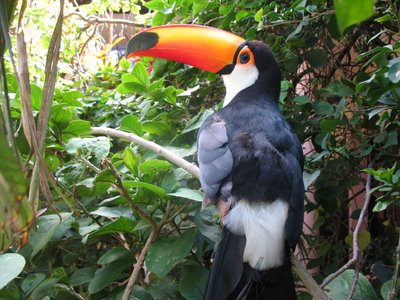
I shared a taxi with an Australian couple to the small town of Samaipata. Higher than Santa Cruz at 1700m, it enjoys a cooler climate, surrounded by tropical rain forest and the nearby Amboro National Park, home to a diverse ecosystem where the cloud forest meets the Andes. From there I took a two day guided trek into the park. My guide only spoke Spanish, however my language skills seem to be improving slowly and we communicated without too many problems and he proved to be an excellent companion.
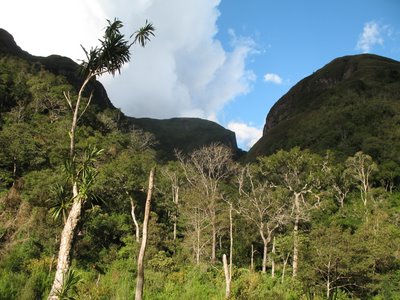
The first day we set up camp early and headed off into the jungle without the packs, trekking through some pristine forest and up to about 2400m where there was a commanding view out over the forest. Camping in the middle of the rainforest was a new experience for me and the next morning I awoke to a chorus of bird calls. The park is famous for its diversity of bird species and it was a little disappointing that most birds were seen and not heard. Although I did see plenty of bright green parrots, the number of other sightings was quite poor compared to the experience I had in the northern jungles of Guatemala a few years ago. I think its necessary to trek deeper into the park to see more wildlife. However, early that morning, we were lucky to spot some monkeys, before they escaped deeper into the forest and we encountered a few snakes en route - luckily they were harmless green tree snakes. The second days trek, was much tougher, carrying a full pack through some very dense vegetation, the guide was constantly using his machete to clear the path through the undergrowth. We climbed up out of the rainforest, to give more excellent panoramas and then descended down a steep tricky trail to a clearing festooned with orchids and rich with a huge variety of butterflies.
After a full days trekking, I got the overnight bus to Sucre, joined by the Australians for company but despite feeling exhausted I failed to get any sleep. After the luxurious Argentine buses, the more basic vehicles and poor roads here have proved more of a challenge on these long journeys.
Paraguay Landlocked Paraguay has been described as "An island surrounded by a sea of land" by its most famous author. Its a little off the beaten track for most travellers but after reading John Gimlette´s excellent historical travelogue on Paraguay At the Tomb of the Inflatable Pig, I was quite keen to see what the country was really like. The book tells the story of Paraguay´s colourful history, the result of a succession of despotic rulers since independence in 1811. For example, the country´s first president, General Francia, ordered anyone gazing at the front of his palace, shot on sight. Then there was the power-crazy Francisco Solano Lopez, who took on the might of Brazil, Argentina and Uruguay simultaneously in 1865, in a mad bid to expand his territory. The resulting War of the Triple Alliance cost Paraguay a quarter of its territory and half its population. In 1932, Paraguay went to war with Bolivia, over the potentially oil rich Chaco, a conflict that was encouraged on both sides by oil multinationals hoping to reap the rewards. The Chaco War gave Paraguay the lions share of the harsh environment but since then little oil has been found. Between 1954 and 1989, Paraguayan´s endured the brutal military dictatorship of General Stroessner, where political opponents were intimidated or murdered and corruption became the way of life. Stroessner was overthrown after 35 years but his Colorado party have continued to dominate politics and regained control in the 2003 elections. The assassination of Colorado vice-president Luis Argaña in 1999 shows things have improved little. President Raul Cubas and General Lino Oviedo, were linked to the murder and both sought asylum in Brazil. Contraband and corruption still dominate the economy and outside the cities, the majority of people are subsistence farmers. For the full story on the country´s history, I highly recommend Gimlette´s book.
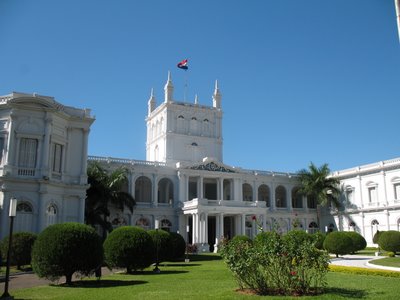
I entered the country from Brazil via Ciudad del Este, one of Latin America´s biggest shopping centres, largely due to the high volume of contraband that is smuggled here. Streams of Brazilians were crossing the bridge into Paraguay in search of a bargain. The chaotic city streets didn´t really tempt me to stay so I got a bus straight to the capital Asuncion. Once out on the open road, it was clear that I´d crossed into a much poorer country and that was still quite evident in Asuncion too, large parts of the city are run down, but it does have its charms. Its riverside setting on the Rio Parana and balconied colonial buildings add to the exotic remoteness. The people were friendly, almost surprised to encounter a tourist, but I did really struggle to understand the Paraguayan Spanish. After finding a cheap hotel where I was the only guest and a good nights sleep, I went out to explore the sights, the Goverment palace, Casa Viola, the Cathedral, the Casa de la Independecia and the Plaza de los Heroes, where the remains of Paraguay´s crazed leaders are guarded.
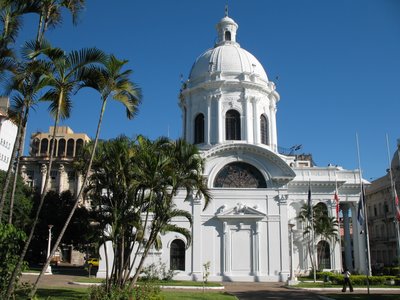
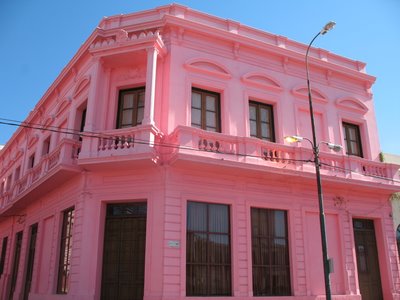
Having decided to get a bus to Bolivia later that evening, I intended to spend my last few hours of that afternoon relaxing in a nearby park. However en route to the park, I got a little lost and wandered into a shanty town on the rivers edge. It soon dawned on me that it wasn´t a very safe area and I quickly began to backtrack my way out. Before I could make my way back to safety, I was grabbed by two young men, who tried to wrestle my day pack from me. They quickly had me in a lock and as I struggled to break free I could see plenty of other locals watching, some looking like they might join in and take a share of the spoils. The youths had pulled the pack off my back but I somehow managed to wrestle it back off them almost losing my balance in the process. My head was spinning but I staggered free and amazingly they appeared to give up. I didn´t pause to reflect and quickly hot-footed it out of there feeling very lucky to have escaped with my possessions, sans cap, which had been lost in the struggle. The incident left me feeling quite shaken and I was glad to board the bus that night, in the company of a few other gringos and the long journey across the Chaco began.
The road soon turned from tarmac to dirt and the bus bumped along through the night, I managed to get a few hours sleep before we were woken at 4am, in the middle of nowhere at a passport control point. The new day dawned to the backdrop of the thick scrub forest of the Chaco. Surprisingly, this dry inhospitable environment is the second most diverse ecosystem on the continent, although most of the wildlife is elusive and nocturnal. Lots of colourful birds could be seen flying around the treetops for the first few hours but the scenery soon became quite monotonous with just the odd estancia to break up the forest and the temperature on the bus began to soar. We reached the Paraguayan customs hut around midday in baking 35C heat and a short while later, went through the slow process of clearing Bolivian customs. We collected our entry stamps at another stop, two hours up the road at a larger village, amid more Bolivian beauraucracy. It was late afternoon by the time we reached civilisation at the small town of Villamontes and the road reverted to tarmac. Another 7 hours later we reached the city of Santa Cruz and it was a relief to find somewhere where a nice comfy bed awaited me - it had been an arduous 27 hour journey.
Iguazu FallsThe bus journey to Puerto Iguazu was done in three stages, which took the best part of 30 hours. Fortunately the leg from Salta to Corrientes was a cama bus, which has comfortable reclining seats and so I managed to get some sleep on the way. Iguazu Falls is reputed to be the worlds most impressive waterfall, set amongst some pristine subtropical rainforest on the Brazil-Argentina border. The scale of the falls, is indeed immense, more than 2km across in a giant horseshoe. The Argentine side offers the best range of viewing options, especially to see the numerous cascades up close. The upper circuit takes you across the top of the main section allowing you to look down over the top of the Bossetti Falls. More impressive is the lower circuit from which the sheer ferocity of the falls is fully appreciated. A short boat ride then takes you across to a small island from where there is an excellent vantage point for the powerful the San Martin Falls. However, this is bettered by the walkway taking you to the edge of "The Devil´s Throat" - here more than one million litres of water a second cascade 80 metres down disappearing into a vast cloud of mist.
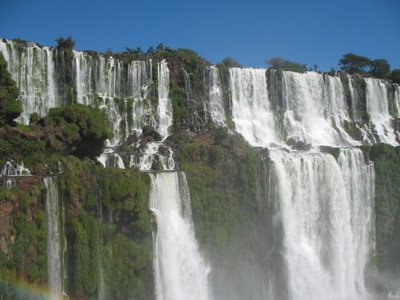
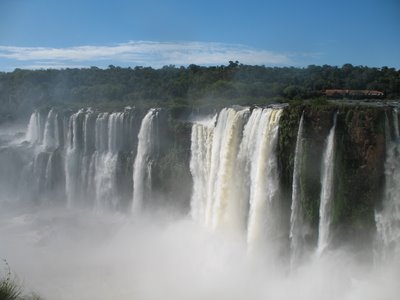
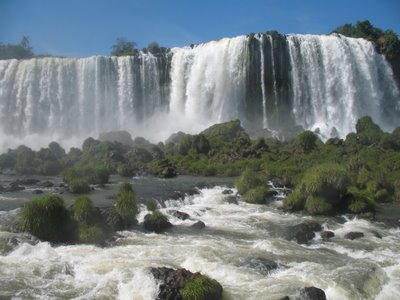
The beautiful jungle setting and the opportunity to view some interesting wildlife tops it all off. I spotted a large iguana, a caiman, toucans and parrots as well as a group of clownish coatis who provided plenty of entertainment. Later that day, I left the tourists behind and took the Macuco trail into the rainforest in search of more wildlife and was rewarded by seeing some Cai monkeys and a brief sighting of an agouti.
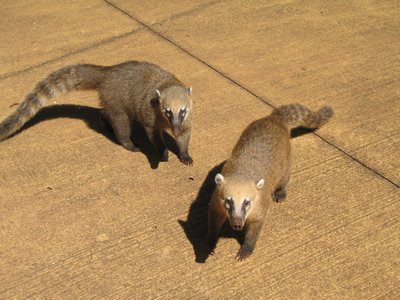
Viewing the falls from the Brazilian side, gives a much better overall panorama and allows you to get right up close to the amazing Devil´s Throat. These last few days here have been well worth the long detour and definitely one of the highlights of the trip so far. Next, its into Paraguay and a long journey across the hostile Chaco into Bolivia. 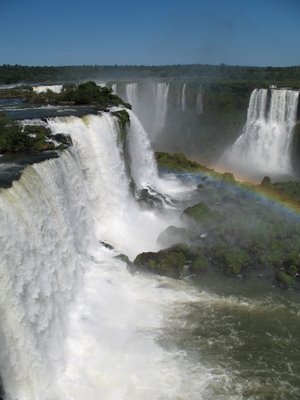
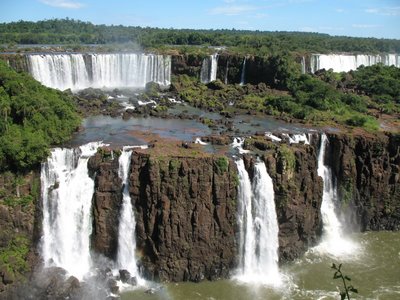
Northwest Argentina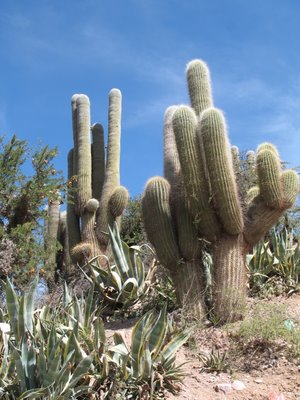
The last few weeks in the north of the country have been really great, have discovered some really magical places and met loads of friendly people. The gentle pace of life and warm dry climate of this part of Argentina has proved to be just the tonic. Spent a few days in the small and relaxed town of Cafayate, exploring the nearby Quebrada de Cayafate, an impressive canyon of polychrome rock formations. Here the canyon is much grander in scale than those at Ischigualasto and Talampaya, with the erosion creating wierd and wonderful landforms such as The Devil´s Throat, The Castles and The Amphitheatre. The next day went trekking in a smaller canyon formed by the Rio Colorado to some waterfalls, where the candlebra-shaped Cordon cactus dominates the landscape.
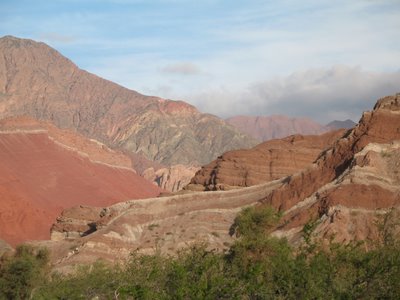
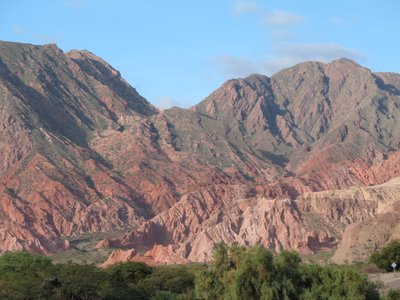
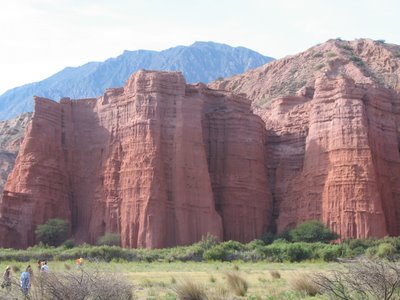
Had a brief stopover in Salta, spending a pleasant afternoon strolling the steets of one of Argentina´s better preserved colonial cities then travelled north to the Quebrada de Humahuaca. A UNESCO world heritage site of Quechua towns linked by a sweeping canyon, where yellows, oranges, reds and purples form rainbows on the rocks surface. Humahuaca, is a picturesque community of adobe houses and cobbled streets 3000m high on the Andean puna. Here the way of life has more in common with Bolivia than the rest of the country, the indigenous people scratch out a living farming in the dry barren environment. Easter Sunday dawned with a thick blanket of cloud obscuring views of the canyon. Semana Santa celebrations were in full swing in the town of Tilcara, where a large crowd of Indians followed an effigy of Christ in a chaotic musical procession around town. The small but impressive pre-Columbian ruins of El Pulcara, a fortified town set atop a small hill, proved to be an excellent distraction for a few hours, while the cloud slowly lifted, revealing the bright colours of the canyon in all their glory.
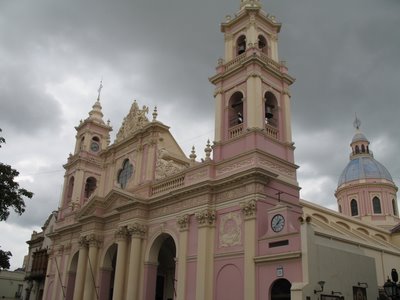
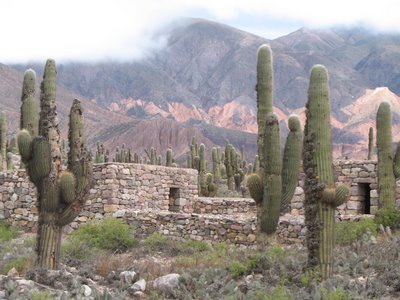
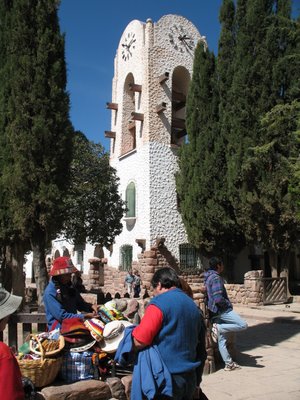
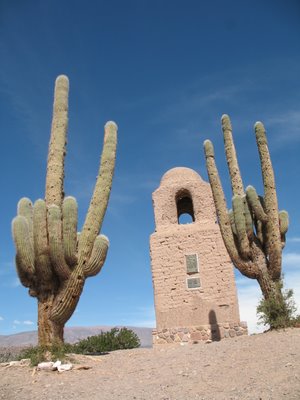
A long journey across country to the Iguazu Falls on the Brazilian border now awaits me.
Ischigualasto National Park - Canyons and Cacti
It took the whole day to get from Mendoza to San Agustin de Valle Fertil. I caught an early bus to San Juan but then had to wait eight hours for the first connecting bus that wasn´t full. Finally arrived at 11pm and was greeted at the station by one of the locals inviting passengers to stay at his hostel. I was joined by a few Argentines and we were soon drawn into the party celebrations for the towns anniversary, drinking wine and eating empanadas til 3am, while acoustic guitarists played some latin American faves. It was an unusual introduction to the friendly town of Valle Fertil after a long drawn out day.
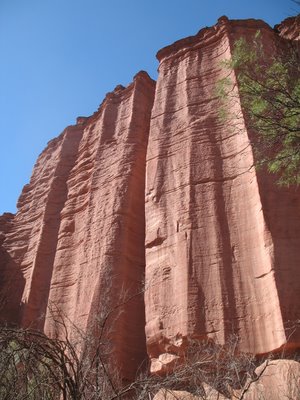
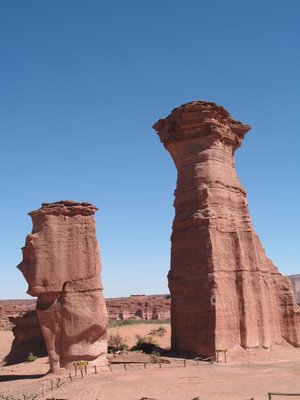
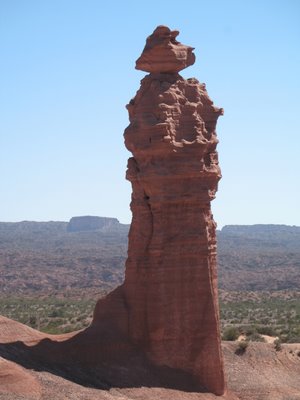
The next day we took a tour of the nearby national parks, Talampaya and Ichigualasto. This is desert and canyon country, similar to the landscapes you might find in Utah or Australia´s red centre. Dramatic rock formations, created by millions of years of erosion are situated in bright red sandstone canyons, surrounded by exotic desert flora of algarrobo trees and cacti. The surreal landscape and new found friends made for quite a memorable day. It was good to be able to practice some Spanish, whilst also having the luxury of switching to English when my understanding failed me. Am finally beginning to make some real progress and can now communicate reasonably well. The main problem is trying understand the language when its spoken quickly and fluently. Returning to the hostel, the Argentines invited me to try some mate, and it was good to finally satisfy my curiosity and sample the yerba brew that is a national obsession. Later that evening there was an onwards bus to La Rioja. With infrequent connections northwards and the country gearing up for Easter, I decided to take the opportunity and make up some time with still plenty more to discover in northern Argentina. However, it was a shame to leave, especially just as the hostel´s weekly barbeque was about to begin. There was just enough time to grab a quick, tasty lomito before the mini bus arrived and I was back on the road again, now with a Belgian couple and a French Canadian for company.
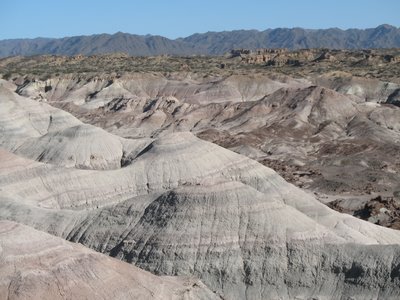
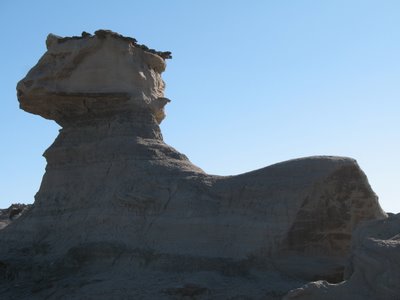
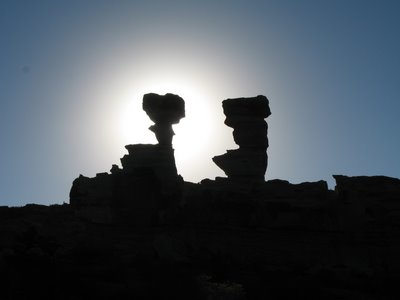

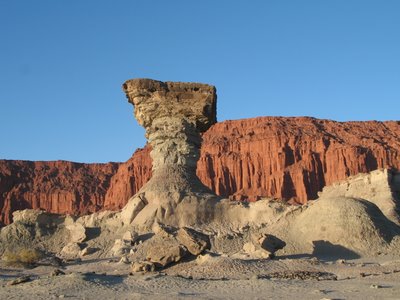
We arrived in La Rioja around 2am and were hoping to make the 3am connection northwards to Tucuman and Salta. However, perhaps predictably, the buses for the next 12 hours were full and we somehow managed to find a hotel still open and broke the journey for the night. After a leisurely few hours exploring the laidback town the next day, it was back on the bus for a six hour trip to Tucuman. The others had to wait an extra hour for their bus to Salta, so I found myself back on my own. Leaving behind the desert of San Juan province, the countryside was soon awash with lush green vegetation and by the time we reached Tucuman, the tropics were almost upon us.
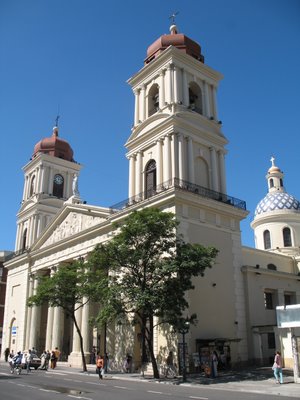
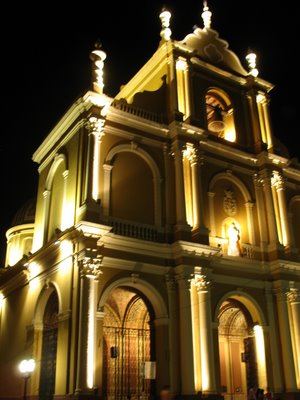
Energetic, seductive, brash and sophisticated, were some of the words my guidebook used to describe Tucuman, so I decided to check it out. Its turned out to be a good place to break the journey for the day. I feel exhausted after the last week or so, between all the sightseeing, trekking and bus trips, there has hardly been any time to relax.
Santiago and the Central Andes
The days are really starting to warm up as I head further north, its a welcome change after the colder temperatures of the south. Santiago, a thriving metropolis of 4 to 5 million people, didn´t really capture my imagination, although I had a couple of busy days and met some interesting people. The lively central plaza, is surrounded by old colonial buildings and nearby the Museum of Pre-Columbian Art, houses an excellent collection of artefacts from across latin America. The highspots of Cerro Santa Lucia and Cerro San Cristobal, offer an escape from the hustle and bustle, yet the views of endless concrete streets and tower blocks, surrounded by a thick blanket of smog, fail to inspire.

Hoping it might still be warm enough for a day at the beach, I moved on to the coastal towns of Valparaiso and Viña del Mar. Valparaiso, is a colourful yet run down place, where the neighbourhoods cling to the hillsides, connected by numerous old funicular railways. These really give the city its charm and I spent an enjoyable day exploring the steep narrow streets and riding the railways. Nearby Viña del Mar, is one of Chile´s main seaside resorts. Although the mornings here are plagued by chilly mists, which cling to the hillsides and tend to linger, the sun finally broke through in the afternoon to allow me a few relaxing hours on the beach.
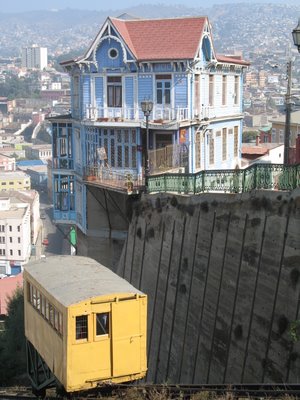
Crossing the Andes back into Argentina, I arrived in Mendoza, the heart of Argentina´s wine region. Mendoza, is a pleasant city of tree lined avenues, street cafes and leafy central plazas. An excellent place to spend a lazy day, visiting a few vineyards and sampling some decent reds, which is exactly what I did. Have just returned to Mendoza, having spent the last three days trekking in the high Andes and its turned out to be one of the highlights of the trip so far.
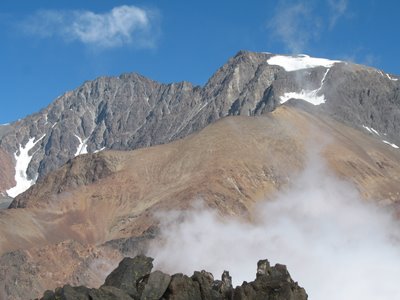
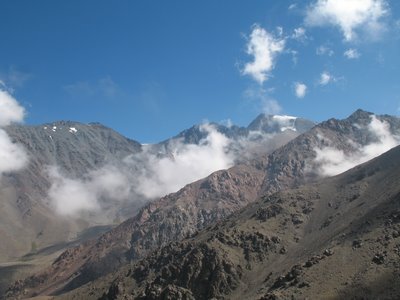
The hiking took place in the Cordon del Plata, an eastern ridge of the Andes, which rises to almost 6000m. A refugio at around 2500m, was the base for each days walk, each led by a local guide. Here the Andes, have a barren, yet rugged beauty, above the treeline and hemmed in by a steep valley and surrounded by high peaks. After two days acclimatizing by trekking up to 3500m, I was ready for the 4150m ascent of San Bernando. Starting in darkness, it was amazing to see the orange brown hills come to life as the sun broke the horizon and the path led steeply uphill. As we gained height, the trail steepened further and became a scramble over loose rocks, turning into a race against the clouds, which were gathering around us and threatening to ruin the spectacular view. After almost 6 hours, we reached the summit and were rewarded with an amazing panaroma along the ridge of the Cordon del Plata before the swirling cloud engulfed us. It was quite surreal, as the cloud slowly cleared to reveal the route we had climbed, and the realisation of the height gained. The descent back down over the loose rocks was quite treacherous in places and it was a relief to make it back to the refugio, exhausted but happy with a sense of real achievement, having conquered the first high mountain of this trip. This region of the Andes definitely merits further exploration. Its possible to hike to almost 6000m, to the summit of El Plata, via a refugio at 4200m. This would indeed present a challenge that would be worth coming back for. 












